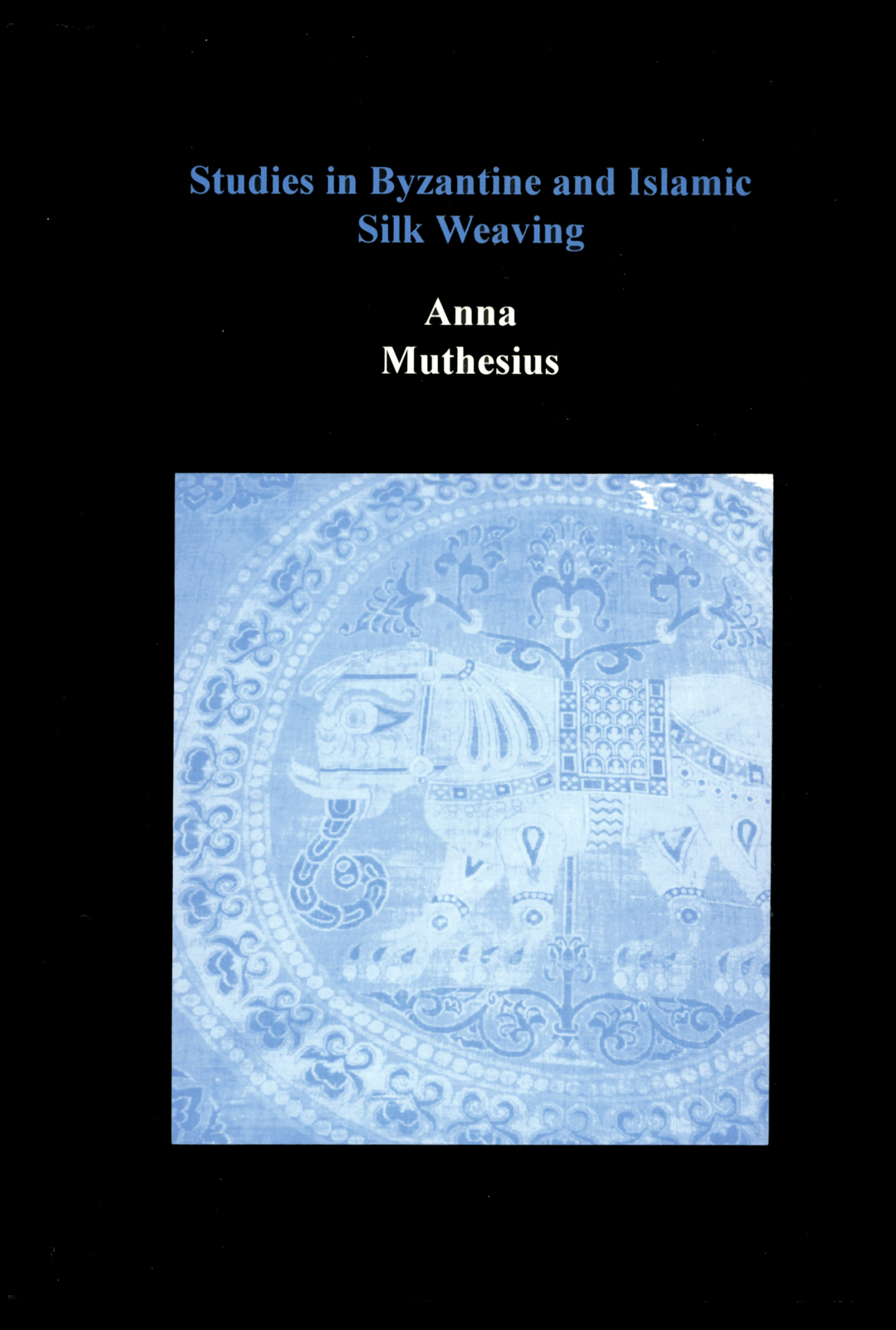Byzantine Textile
(ὑφάσματα). Byz. textiles were mainly of linen (linon), wool (erion), and silk. Cotton (bambax, bambakina, bambukina) is more rarely mentioned in the sources, though the cultivation of cotton in the Peloponnesos in the 14th and 15th C. is attested by Plethon (Analekten der mittelund neugriechischen Literatur, ed. A. Ellissen, vol. 4.2 [Leipzig 1860; rp. 1976] 56 and 101, para. 21). These textiles were produced in state weaving establishments, private workshops, and individual households, depending on their type, quality, and use. Alexandria (and Egypt in general) and Syria were particularly noted for textile production before they fell to the Arabs in the 7th C.; Thessalonike, Corinth, Thebes, and Athens are known to have had important textile (esp. silk) weaving workshops between the 10th and 12th C.
Byz. weavers used several types of loom. Only a simple loom was needed for the common linen and woolen cloth (tabby) and tapestry weaves. Patterned compound weaves, preferred for silk but also used for wool, were made on a drawloom with a pattern-making mechanism. Finished woolen fabrics could also be fulled by fullers (knapheis) before being made into clothing by tailors. Few Byz. weaving implements have been preserved, as most were made of wood, but some clay spindle whorls, bronze spindle hooks, and bronze loom combs have been found at Corinth (Davidson, Minor Objects, nos. 1213–33). Bronze needles, opentip thimbles, and clay thread spools used for sewing were also found at Corinth (nos. 1234–98).
A wide variety of textiles is recorded in the sources. Besides the most highly valued silks and purple-dyed cloths (see Blattion), homespun woolens, coarse linens (sabana), and fine linen cloths (lepte othone) are also mentioned (TheophCont 199.22–200.1). The Byz. also manufactured looppile textiles (mallota and linomallotaria), the fleece-like texture of which made them particularly suitable for blankets and covers (P.Ant I 44.8; TheophCont 318.15); they had knotted carpets (nakotapetes; ibid. 319.16) as well.
Ordinary tunics and cloaks were made of plain linen, woolen, or cotton cloth, while silks, often woven with gold threads, were the costume of emperors, the imperial household, and court officials. Linen was needed for sails, nets, and for other commercial and military uses. Household towels, coverings, curtains, and such were made of linen, while blankets, coverlets, and cushions were made of wool.
Hangings, curtains, and carpets executed in various materials and techniques were a regular component of domestic and official architecture, both secular and religious. Curtains fill the spaces between columns in a mosaic representing the palace of Theodoric the Great in S. Apollinare Nuovo in Ravenna (Volbach, Early Christian Art, pl.152). The importance of textiles in an architectural context is revealed in the endless opening and closing of curtains around the emperor and in the imperial palace as recorded in the De ceremoniis. Hangings had a more purely decorative function. Often executed in tapestry technique, hangings were particularly suited for the portrayal of figural subjects, both secular (e.g., the Hestia and the Nereid tapestries in the Dumbarton Oaks Collection, Washington, D.C., ca.6th C.) and religious (e.g., the Virgin in the Cleveland Museum of Art, ca.6th C.). The silk tapestry depicting a triumphant emperor in Bamberg is a rare later specimen of these weavings (ca. early 11th C.). A separate category of textiles comprised those that evolved in the service of church ritual: over time, various altar covers and other liturgical cloths such as the aer, antimension, eiliton, and endyte acquired distinctive shapes as well as specific decoration.
Decoration, whether in the form of ornamental designs or figural composition or both, was an important component of higher quality textiles. Besides the mechanically produced designs of the drawloom weaving, decoration could also be painted, achieved through resist dying, or executed in such ancient textile techniques as tapestry weaving and embroidery. The latter technique was particularly favored in the Palaiologan period.
One of the most noted uses of Byz. textiles, esp. the silks produced in state workshops, was as imperial gifts, regularly distributed on specific official occasions (e.g., De cer. 235.12–13, 258.5–6; TheophCont 342.21) or sent abroad as important instruments of foreign policy.
Byz. textiles have not fared well. Extant examples are scarce, despite the prominence of textiles as reflected in Byz. written sources and as depicted in works of art. Early textiles (before 8th C.) come mainly from Egyptian graves, while later textiles (from 9th C. onward) survive primarily in the church treasuries of Western Europe; most of the latter are silks. Byz. textiles have also been found in Scandinavia and Eastern Europe, esp. Kiev.
Gonosová, Anna. "Textiles." In The Oxford Dictionary of Byzantium. : Oxford University Press, 1991.
Books on Byzantine Textile
 Studies in Byzantine and Islamic Silk Weaving by Call Number: NK8908.8 .M87 1995ISBN: 0907132936Publication Date: 1995-12-31
Studies in Byzantine and Islamic Silk Weaving by Call Number: NK8908.8 .M87 1995ISBN: 0907132936Publication Date: 1995-12-31Studies in Silk in Byzantium by
Call Number: NK8908.8 .M87 2004ISBN: 1899828249Publication Date: 2004-12-31 Designing identity : the power of textiles in late antiquity by Call Number: NK8907 .D47 2016ISBN: 9780691169422Publication Date: 2016-03-22
Designing identity : the power of textiles in late antiquity by Call Number: NK8907 .D47 2016ISBN: 9780691169422Publication Date: 2016-03-22Weavings from Roman, Byzantine and Islamic Egypt by
Call Number: NK8888.A1 M25 1999ISBN: 1883015316Publication Date: 2005-08-10 Dress and Personal Appearance in Late Antiquity by Call Number: GT560 .M67 2018ISBN: 9789004343955Publication Date: 2018-01-25
Dress and Personal Appearance in Late Antiquity by Call Number: GT560 .M67 2018ISBN: 9789004343955Publication Date: 2018-01-25 Ancient Greek, Roman and Byzantine costume and decoration by Call Number: GT545 .H6 1947
Ancient Greek, Roman and Byzantine costume and decoration by Call Number: GT545 .H6 1947 Le costume officiel des dignitaires byzantins à l'époque Paléologue by Call Number: GT1755.B97 P55 1994ISBN: 9155433367
Le costume officiel des dignitaires byzantins à l'époque Paléologue by Call Number: GT1755.B97 P55 1994ISBN: 9155433367Reconstructing the Reality of Images by
Call Number: DF601 .P37 2003ISBN: 9004124624Publication Date: 2002-11-29Coins and Costume in Late Antiquity by
Call Number: CJ849 .B78 1993ISBN: 0884022196Publication Date: 1993-01-01


